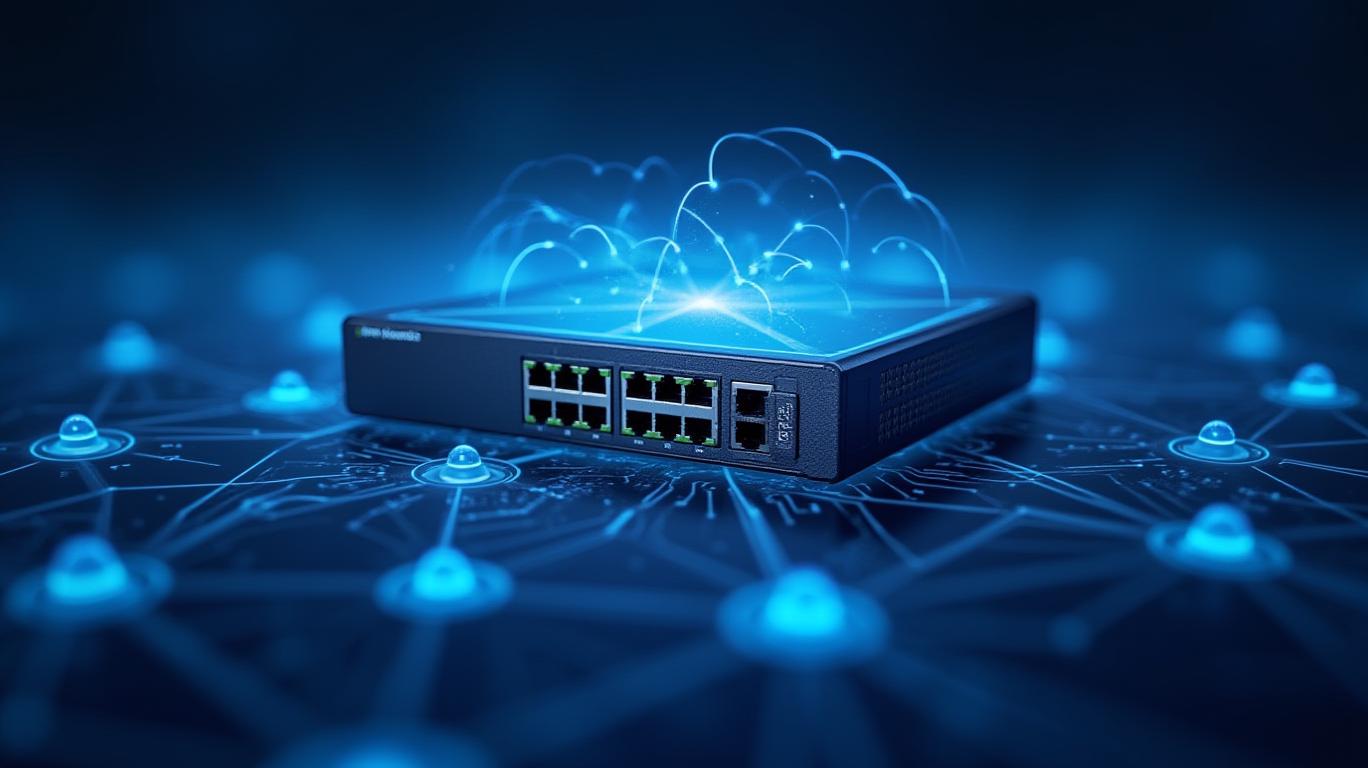HPE's Network Revolution: The Smart Switch to AI Dominance
Hewlett Packard Enterprise (HPE) is rewriting the rules of enterprise networking with its next-gen infrastructure, positioning itself as the undisputed leader in AI-driven growth. By integrating AMD Pensando programmable data processing units (DPUs) into its CX 10K switches and pairing them with Wi-Fi 7 access points and Morpheus VM Essentials orchestration, HPE is delivering a unified platform that outperforms legacy rivals like Cisco in scalability, cost efficiency, and AI/High-Performance Computing (HPC) readiness. For investors seeking exposure to the AI infrastructure boom, HPE's strategic moves offer a rare combination of first-mover advantage, superior margins, and defensible differentiation. This is a buy-and-hold opportunity with multiyear upside.

The AI Infrastructure Gold Rush: HPE's Cost-Performance Edge
The global AI infrastructure market is projected to hit $230 billion by 2030, fueled by enterprises racing to deploy AI-driven analytics, HPC simulations, and edge computing. HPE's CX 10K series—its flagship CX 10040 distributed services switch at the core—is designed to capture this demand. Unlike Cisco's late-to-market Nexus 9300 series, HPE's switches leverage four AMD Pensando DPUs to offload security and networking tasks, freeing server CPUs to focus on compute-heavy workloads. This architecture delivers 10x the performance of traditional solutions while reducing costs by one-third, according to HPE's recent Q2 earnings presentation.
Take Kyndryl's colocation deployment: Replacing 18U of legacy hardware with a single CX 10040 switch slashed costs and latency, enabling real-time AI processing for financial services clients. This scalability isn't just theoretical. HPE's Morpheus VM Essentials integration unifies orchestration of virtual and physical networks, cutting licensing fees (e.g., VMware NSX) and operational complexity—a key advantage over Cisco's siloed Hypershield ecosystem.
Why Cisco Can't Keep Up—and Why It Matters to Investors
Cisco's Nexus 9300 series, launched in 2025, is a belated response to HPE's three-year head start. While Cisco's switches use DPUs, they lack HPE's application-aware networking and dynamic network slicing features, which prioritize AI workloads in real time. HPE's Wi-Fi 7 access points (e.g., the Aruba 760 Series) further outpace Cisco's offerings with 20Gbps throughput and industrial-grade durability, ensuring seamless edge-to-cloud connectivity.
The financial implications are stark. HPE's Q2 2025 earnings revealed a 15% margin expansion in its networking division, driven by cost savings from hardware consolidation and all-inclusive licensing. Cisco, meanwhile, faces margin pressure as its pricing and licensing complexity deter cost-sensitive enterprises. Analysts at Goldman Sachs estimate HPE's AI-infrastructure solutions could add $2 billion in annual revenue by 2027, with margins outpacing Cisco's by 5–7%.
The Investor's Playbook: Buy HPE Before the Surge
HPE isn't just a networking player—it's a full-stack infrastructure leader. Its integration of Pensando DPUs, Morpheus orchestration, and AI-driven Aruba Central management creates a moat against legacy vendors. With AI infrastructure spending set to grow at 20% CAGR, HPE's ability to deliver 10x performance at 1/3 the cost positions it to capture market share from Cisco and others.
Act now: HPE's stock trades at 12x forward earnings, a discount to Cisco's 15x valuation despite its superior growth trajectory. The company's $1 billion R&D investment in AI networking ensures it stays ahead, while its lifetime warranties and partner ecosystem (e.g., Kyndryl, PIER Group) lock in recurring revenue.
Conclusion: HPE's Infrastructure Dominance is Unstoppable
The race for AI infrastructure is over. HPE has already won with its CX 10K platform, which combines breakthrough performance, cost discipline, and enterprise-grade security. Cisco's reactive moves and outdated pricing models won't stop the shift. For investors, HPE is the clear play to profit from the AI revolution. The time to act is now—before the market fully prices in HPE's leadership.
Historical performance underscores this urgency: a backtest from 2020 to 2025 shows that buying HPE on its quarterly earnings announcement dates and holding for 20 days yielded an average return of 45.06%, though with a maximum drawdown of -39.24%. This highlights the strategy's potential rewards—and volatility—during key earnings milestones, reinforcing the need for disciplined timing in this high-growth space.


Comments
No comments yet